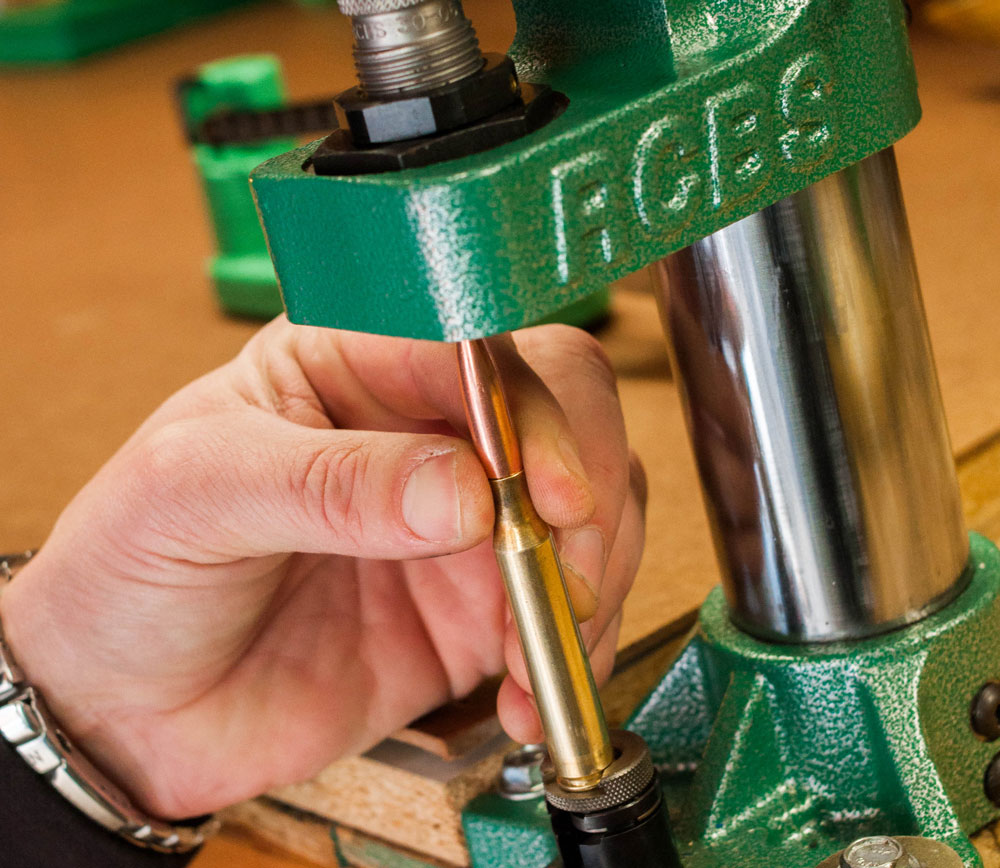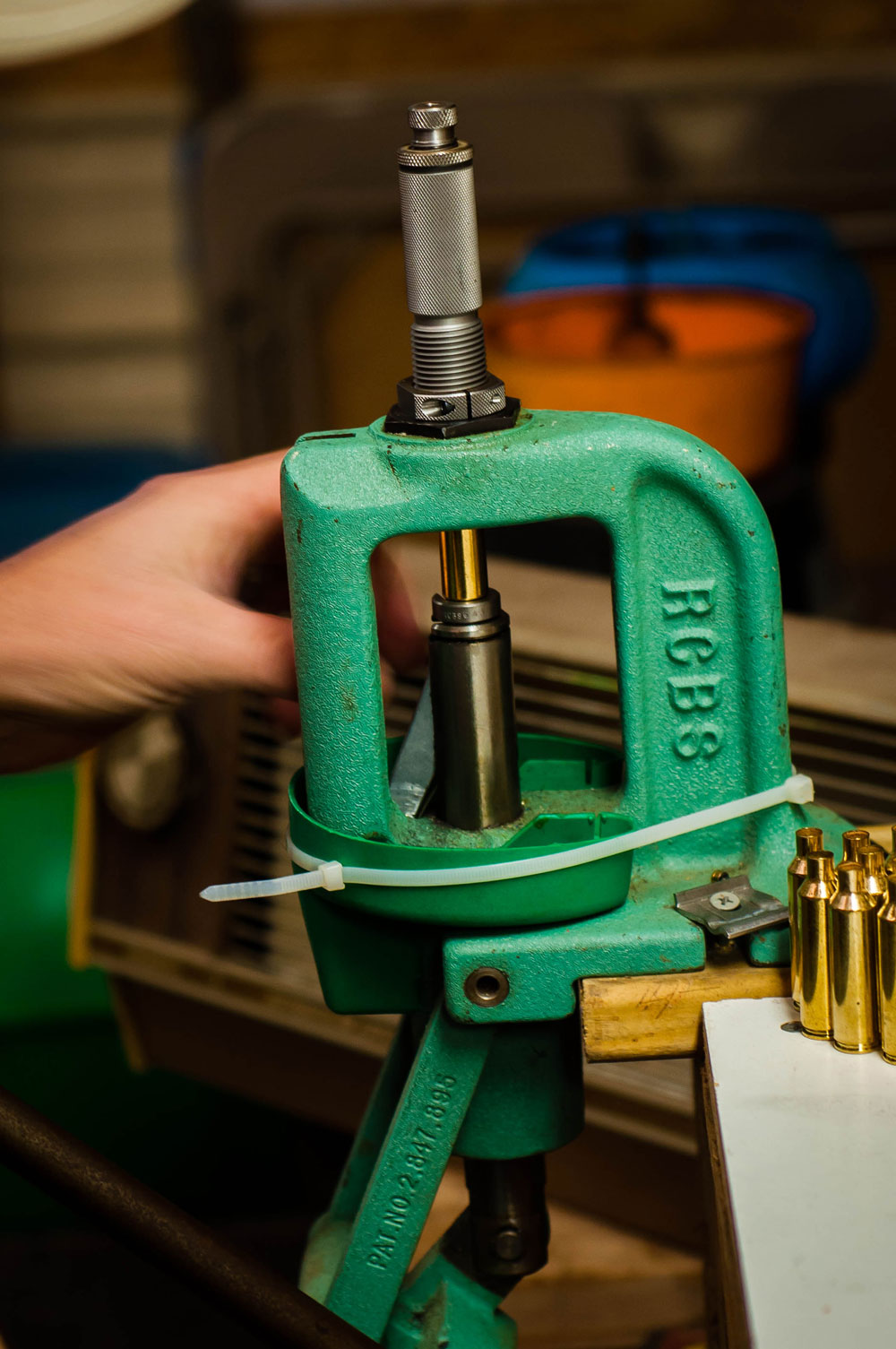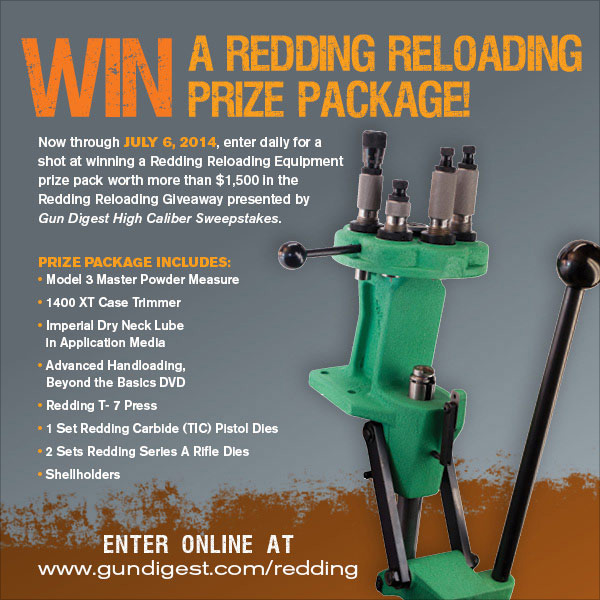Modern Gun School Special Content

As a reloader, the first and foremost piece of gear you’ll need is a reloading press. They come in many different shapes, sizes, colors and styles, and your style of reloading should dictate which one will best serve your needs. Are you a high volume reloader? Do you primarily reload for pistols or rifles? Or maybe both?
By Philip Massaro
Let’s take a look at the different options and get you set up properly. Reloading presses generally fall into three categories: single stage, turret and progressive.
The single stage presses are designed to hold one reloading die at a time, and to perform one function at a time. Many are shaped like an “O”, such as the classic RCBS Rock Chucker or the Lyman Orange Crusher, and these are the strongest designs. They offer the rigidity that produces the most uniform ammunition, which is the key to accuracy. Others are shaped like the letter “C”, like the Lee Single Stage reloading press. These are generally more affordable, although they have more flexure, and therefore more room for variation.
For most of my reloading work, I prefer the single stage “O” style press, even though the process takes a little longer than the other styles. It lets me give the attention to detail that is required for ammunition destined for benchrest or long-range rifle work. This style of press is what I would recommend for the beginner, as it will best help you to learn the individual processes involved in safely reloading your own cartridges.
The turret press is a modified version of the single stage press, in that it still only performs one function per pull of the handle, yet it has a rotating ‘turret’ head which holds between three and seven reloading dies at once. If you need to switch between resizing, flaring or seating dies, you simply rotate the turret head to that particular die and proceed with the operation.
They do have a bit more play in them than do the “O” style single stage, but they can be very useful for reloading pistol ammunition. The Lee Turret press is a classic example of this style, and although it does have a bit of play in the rotating aluminum head, I have used one to produce thousands of accurate rounds of ammunition.
Redding’s T7 turret press is a different animal altogether, the steel construction gives it the capability of doubling as an anchor for a cruise ship (this is a good thing, you want your press to be very stable). As is the case with most Redding products, the tolerances are held very tight. The seven threaded die holes allow you to keep two or three calibers on the press at once, which can save you time and maybe prevent carpal tunnel syndrome from screwing dies in and out. I own and use a T7, and will happily report that it is a great press, and well worth the investment.
Progressive presses are the answer to providing large amounts of ammunition quickly, and are a worthwhile choice for those who participate in gun games. They generally feature four or five “stations”, and multiple functions are performed each time the press handle is pulled. A powder measure is part of the operation, which is activated when the empty case is pressed against the dispenser’s mouth.

So, once you have the machine properly adjusted, five cases are worked at once, and a case gets resized, re-primed, flared, charged, and a new bullet seated with one pull of the handle. The downside? As with any system that has moving parts, it is not difficult for things to come out of adjustment. A pistol case that is not properly resized, or even worse overcharged, can result in a jam or personal injury.
I recommend that you become thoroughly experienced with loading ammunition on a single stage press before you delve into the progressive presses, so you can adjust and observe all the functions with confidence. Should a primer be misaligned and go off due to being crushed in the process, the presence of a dispenser full of powder can pose a dangerous threat.
Now, I’m not trying to scare you, but please realize that the danger does exist, and that is why I recommend the progressives be left for a more experienced reloader. Once you do get them set up right, you can quickly and effectively crank out hundreds of rounds per hour. I like the RCBS Pro2000 Auto-Index and the Dillon RL550B. I’ve used both of these machines with good results.
Whichever style fits your needs and reloading experience level best, be sure and do your homework, read customer reviews, and buy the best press you can afford. The results at the range and in the field will be well worth the expense.

